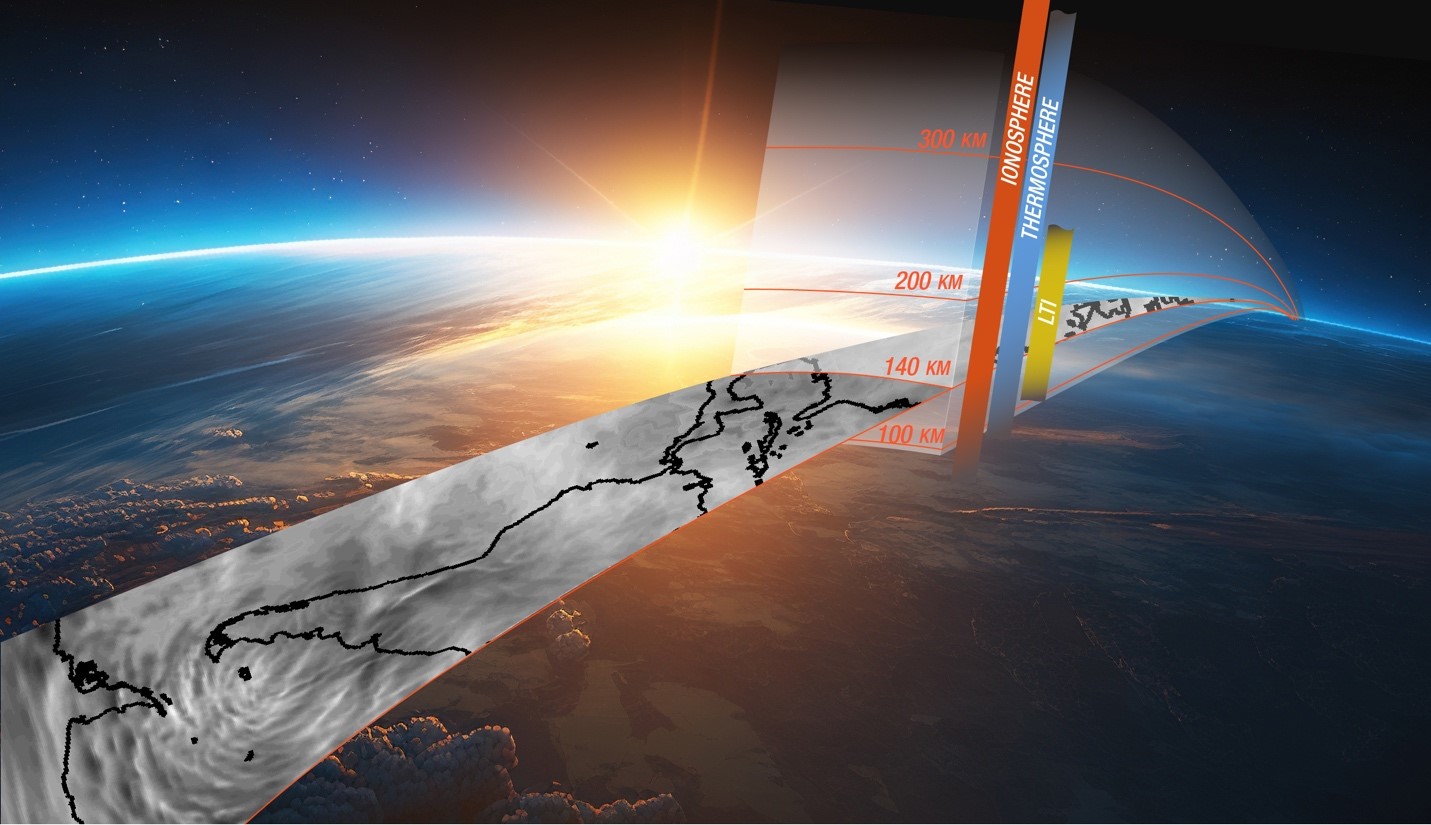UAF on team in NASA-funded space weather project competition
Rod Boyce
907-474-7185
July 3, 2024
The University of Alaska Fairbanks is part of a team led by the University of Colorado Boulder and Johns Hopkins Applied Physics Laboratory that has won $2 million from NASA to pursue a mission studying how Earth’s lower atmosphere influences the upper atmosphere at low Earth orbit altitudes.
The team is one of three chosen last month by NASA in a competition to develop a proposal to enact the space agency’s Dynamical Neutral Atmosphere-Ionosphere Coupling mission, known as DYNAMIC.
“We’re grateful and overjoyed for this opportunity to work together to make our vision of DYNAMIC a reality,” said Tomoko Matsuo, the project’s principal investigator and an associate professor in the Ann and H. J. Smead Department of Aerospace Engineering Sciences at UC Boulder.

Poorly understood multiscale ripples in the lower thermosphere-ionosphere region, as depicted in the gray-scale ground track, are the result of atmospheric wave forcing from below.
“With these measurements we can finally gain an understanding of the critical link between Earth’s atmosphere and space,” he said.
Each team will receive funding for a nine-month study, after which NASA will select one proposal. That team will design and build a satellite with science payloads to explore gaps in understanding how changes in the lower atmosphere influence the upper atmosphere and low Earth orbit.
UAF will support the project by providing data from its ground instruments in Alaska, Scandinavia and Antarctica. and encouraging other ground instrument operators to collaborate in the mission.
UAF physics professor Mark Conde, with the Geophysical Institute and College of Natural Science and Mathematics, said the combined use of ground- and space-based instruments is “highly complementary.”
“We operate an extensive network of ground-based remote sensing instruments, primarily at high latitudes, and we also collaborate with partner instruments at all latitudes,” he said.
“Working together with the DYNAMIC spacecraft, we will have an ideal data set to address the critical questions of coupling between upper and lower regions of Earth’s atmosphere,” he said.
Partners in addition to UAF include NASA’s Jet Propulsion Laboratory, the Massachusetts Institute of Technology’s Haystack Observatory, Clemson University, Arizona State University and the National Center for Atmospheric Research in Colorado.
The project will fulfill science goals recommended by the 2013 Decadal Survey for Solar and Space Physics published by the National Academies of Sciences, Engineering and Medicine.
DYNAMIC is expected to provide comprehensive measurements of the upper atmosphere in very low Earth orbit, at altitudes below about 150 miles.
This will provide a deeper understanding into how space weather — events generated by the interaction of solar activity and Earth’s weather — can interfere with satellites, navigation systems and other technology.
“Earth and space are an interconnected system that reaches from the heart of our solar system, the sun, to the lowest reaches of the atmosphere where we live and extends to the edge of our heliosphere — the boundary of interstellar space,” said Nicola Fox, associate administrator, Science Mission Directorate at NASA Headquarters in Washington.
“While space weather can spark the beautiful auroras across our skies, it also has the potential to cause disruptions for us here on Earth and can be dangerous for our spacecraft and astronauts in space,” she said.


